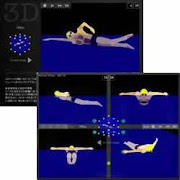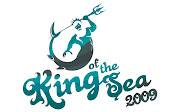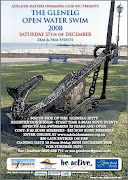 In major international competitions, including the Olympics and FINA World Cup and Grand Prix events, open water swimmers strap on two transponders, one on each wrist. The swimmers must finish the race with both transponders.
In major international competitions, including the Olympics and FINA World Cup and Grand Prix events, open water swimmers strap on two transponders, one on each wrist. The swimmers must finish the race with both transponders. What happens in a major international competition, when a swimmer's transponder comes off for some reason? If the swimmer finishes the race without one or both of the transponders, the swimmer is disqualified. In these cases, the swimmer usually indicates to (i.e., yells at) the referee that he or she has lost the transponder. There is no need to stop in the race and lose precious time. The referees in cooperation with the Omega Timing officials will deliver the replacement transponder to the swimmer in the water or the coach at a feeding station or in an escort boat.
What happens in a major international competition, when a swimmer's transponder comes off for some reason? If the swimmer finishes the race without one or both of the transponders, the swimmer is disqualified. In these cases, the swimmer usually indicates to (i.e., yells at) the referee that he or she has lost the transponder. There is no need to stop in the race and lose precious time. The referees in cooperation with the Omega Timing officials will deliver the replacement transponder to the swimmer in the water or the coach at a feeding station or in an escort boat. At the 2008 World Open Water Swimming Championships in Seville, this is exactly what happened. A swimmer indicated to the referee that her transponder was lost and the transponder was delivered to her coach at the feeding station. The transponder was handed to the swimmer on her next feed.
At the 2008 World Open Water Swimming Championships in Seville, this is exactly what happened. A swimmer indicated to the referee that her transponder was lost and the transponder was delivered to her coach at the feeding station. The transponder was handed to the swimmer on her next feed. Other times, a referee can hand a replacement transponder to a swimmer in the water as the race in underway and he or she is swimming in a pack. The most recent example occurred at the men's 10K in the Asian Beach Games in Bali.
Things happen.
But experienced referees and race officials are generally always well-prepared for the unexpected to happen.
Upper photo shows Erica Rose with her transponders snugly taped to her wrists with waterproof tape. The tape helps the transponder’s wrist straps from flapping about, which can cause severe frustration during a marathon swim. Photo by Dr. Jim Miller.
Middle photo shows Larisa Ilchenko winning the 2007 World 10K Championship with a transponder on her right wrist. Photo by Dr. Jim Miller.
Lower photo shows FINA officials removing the transponders from the wrist of Margy Keefe, silver medalist at the 2005 World 5K Championships.
Background: The transponders and floating timing system are innovations from Omega Timing that has managed the timekeeping at the Olympics since 1932. Omega developed the first semi-automatic swimming timer used at the 1956 Melbourne Olympics, and later developed the original touch pads placed at each end of swimming pools that were first used at the 1967 Winnipeg Pan American Games.
Copyright © 2008 by World Open Water Swimming Association




















No comments:
Post a Comment